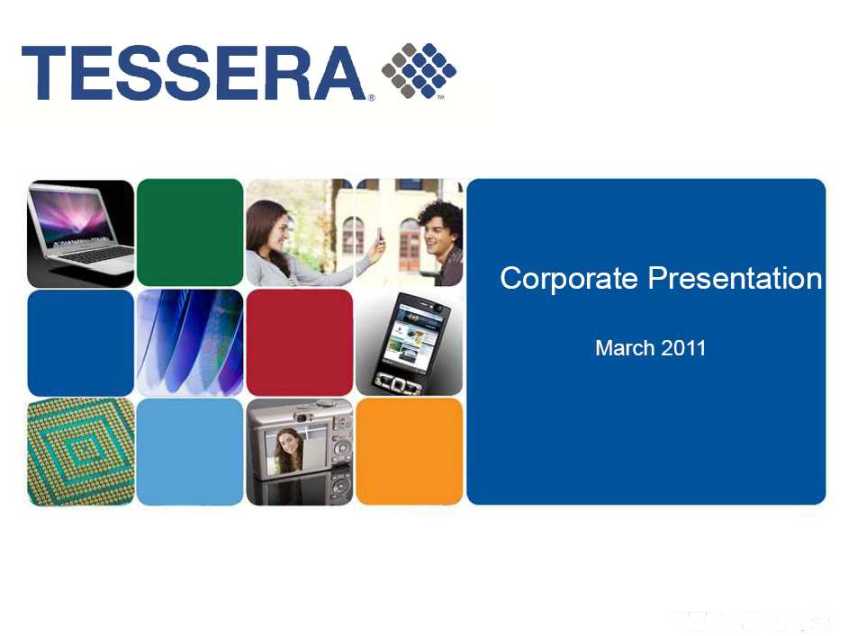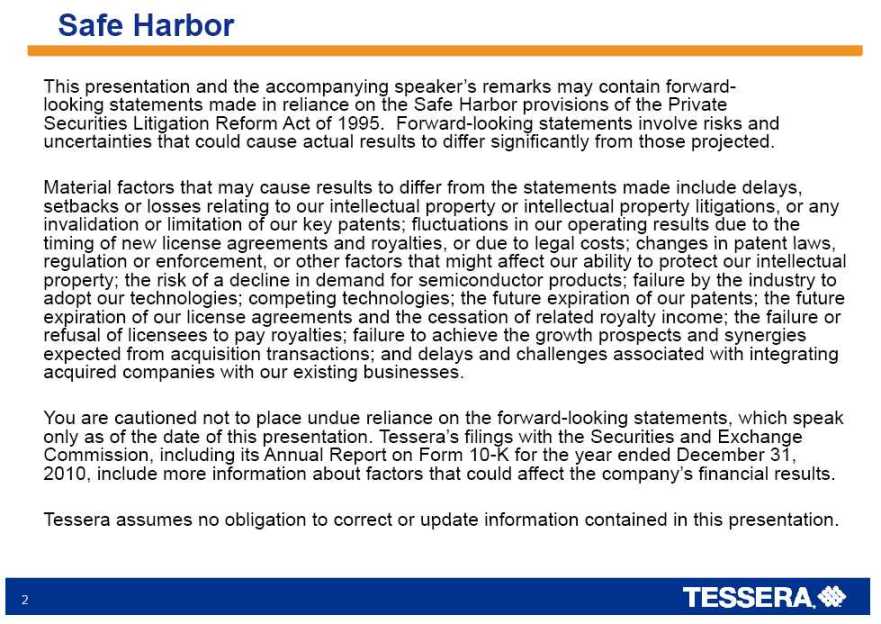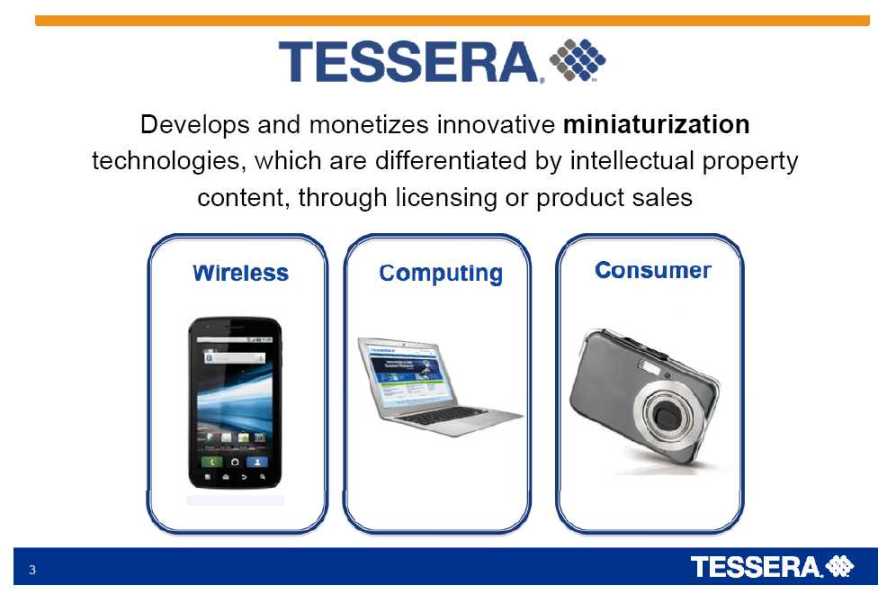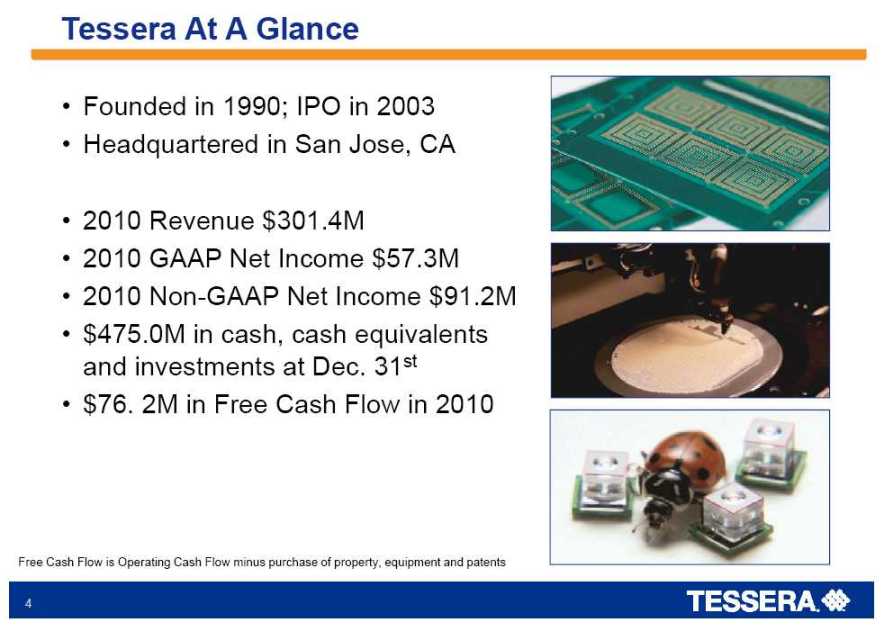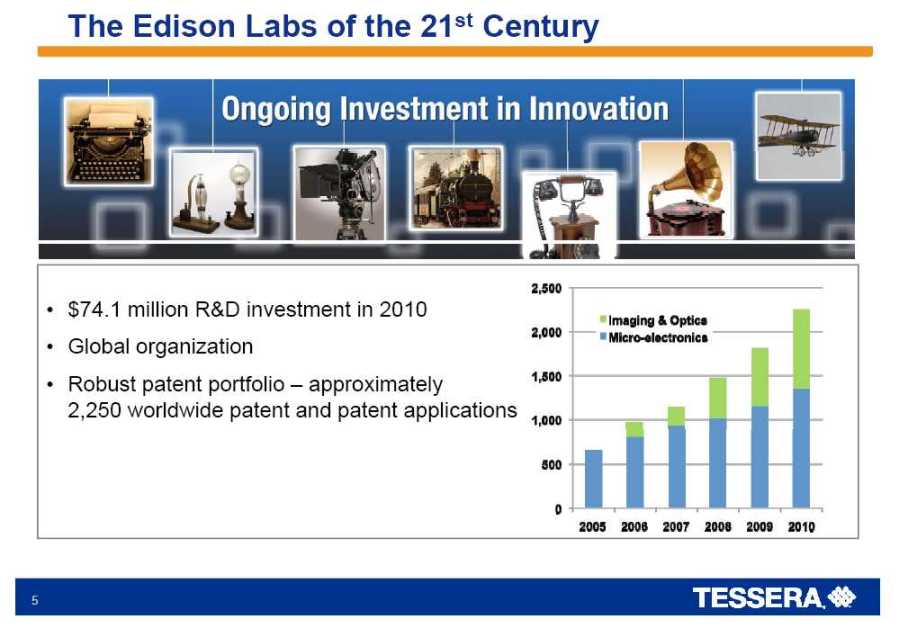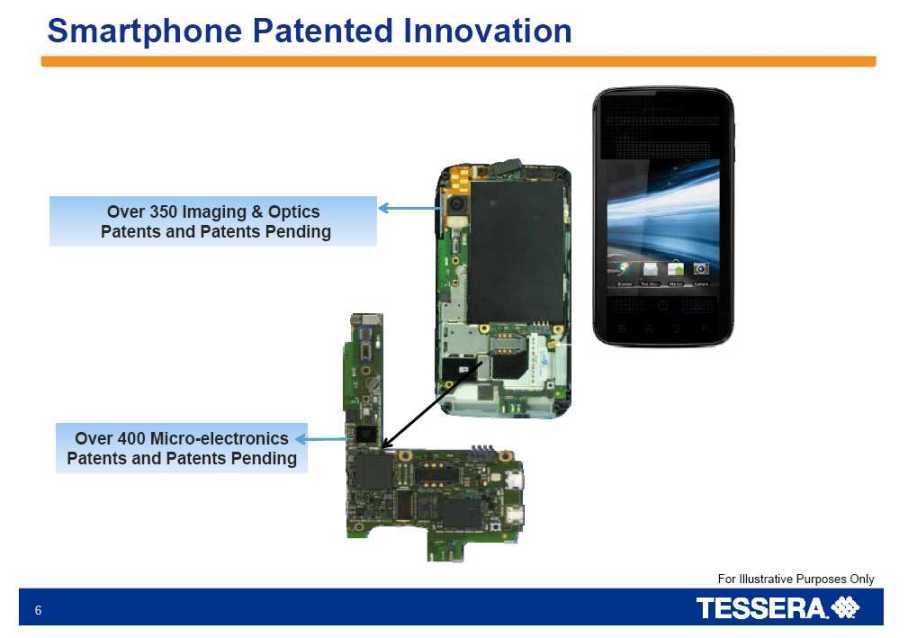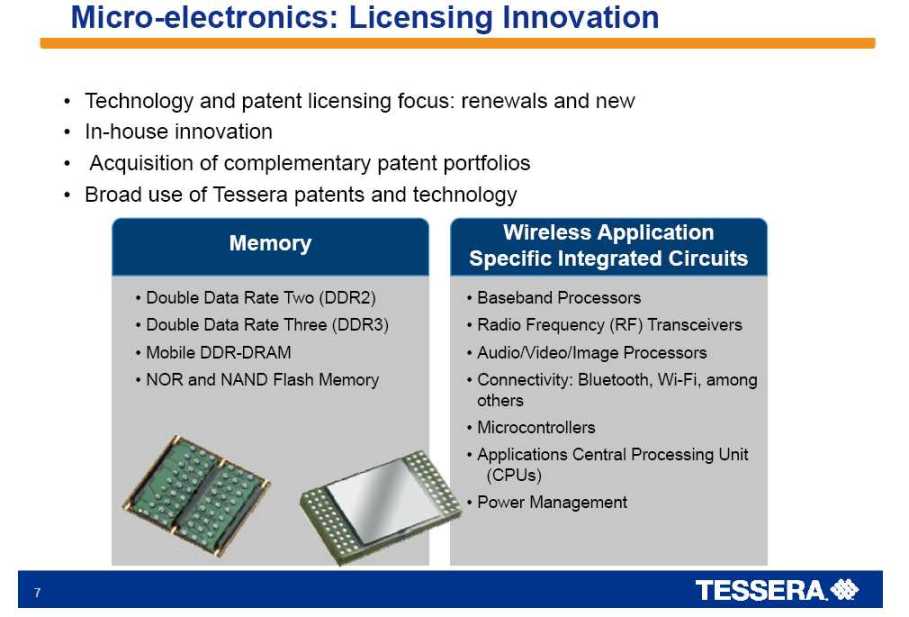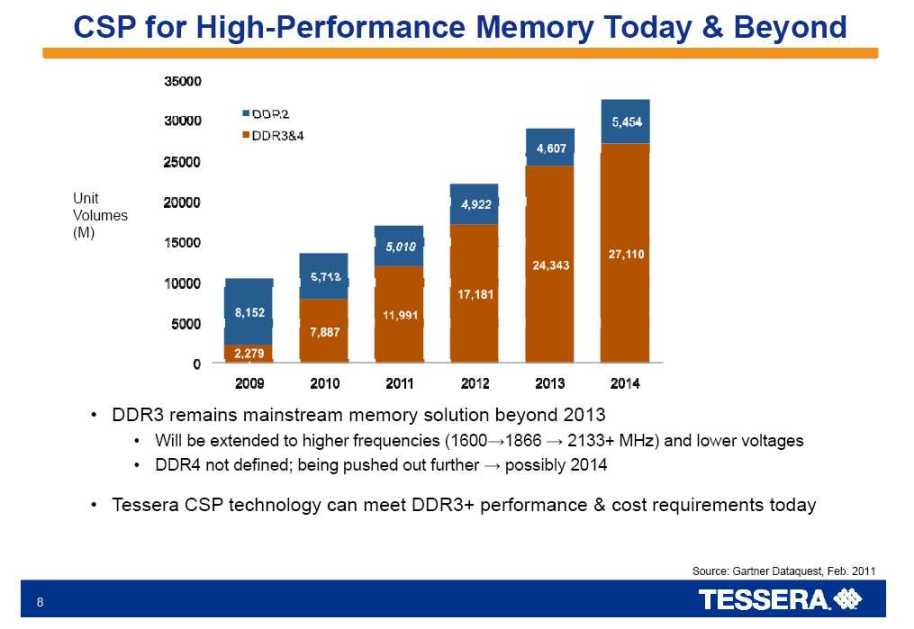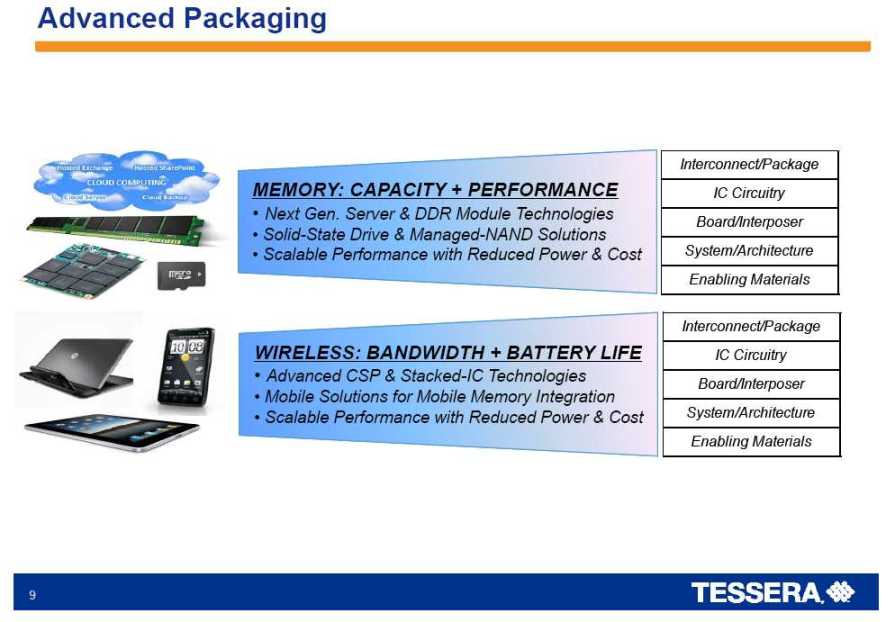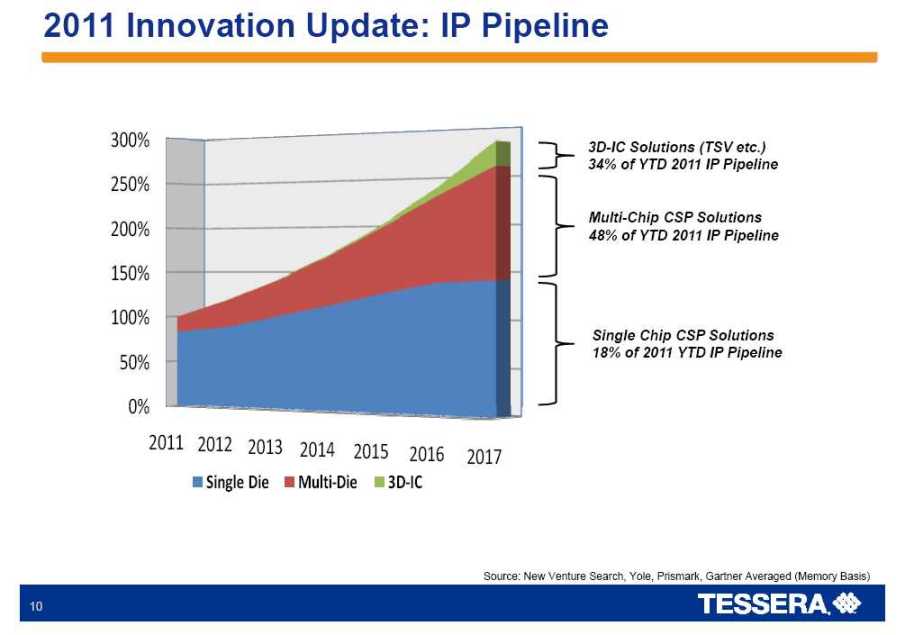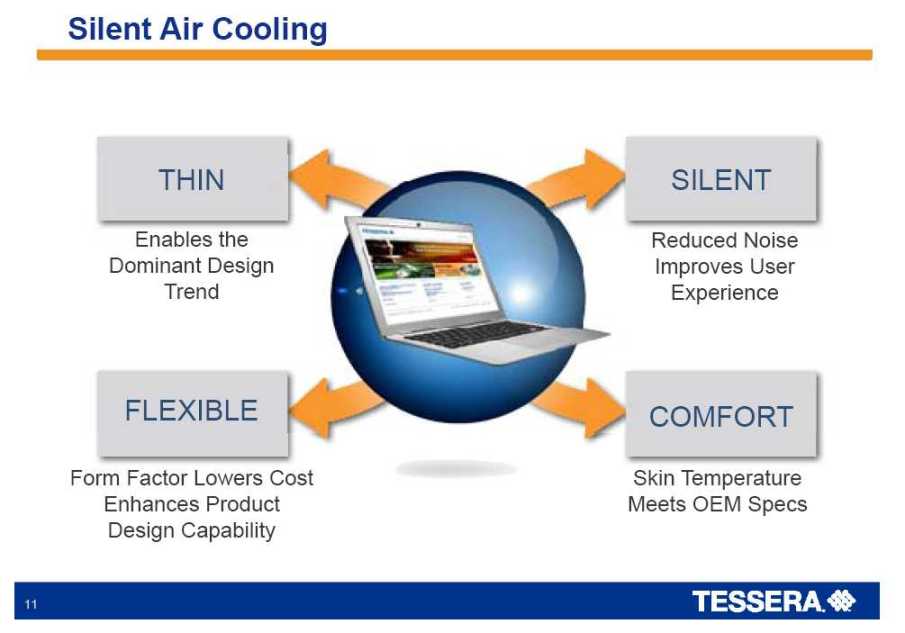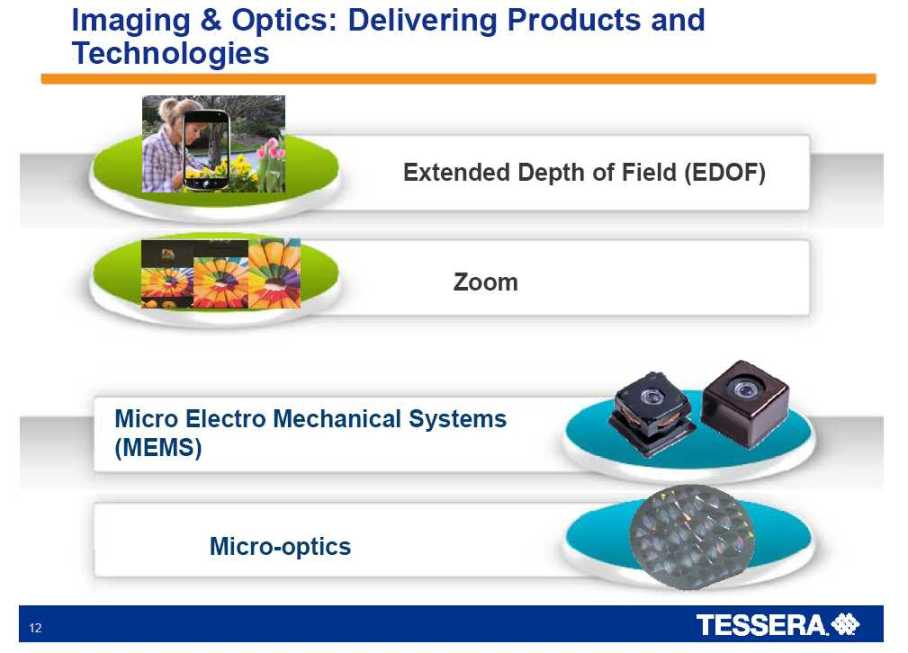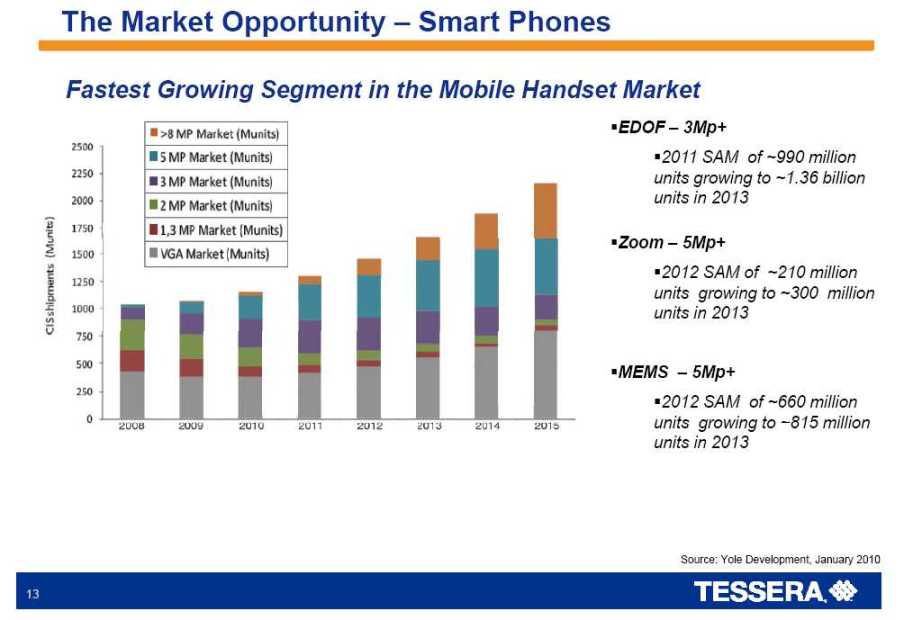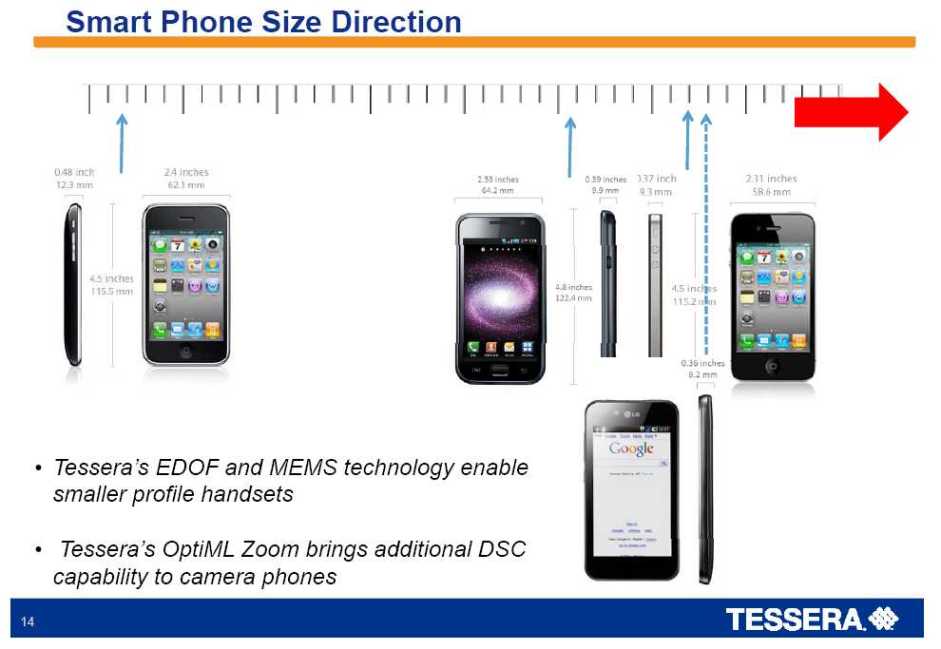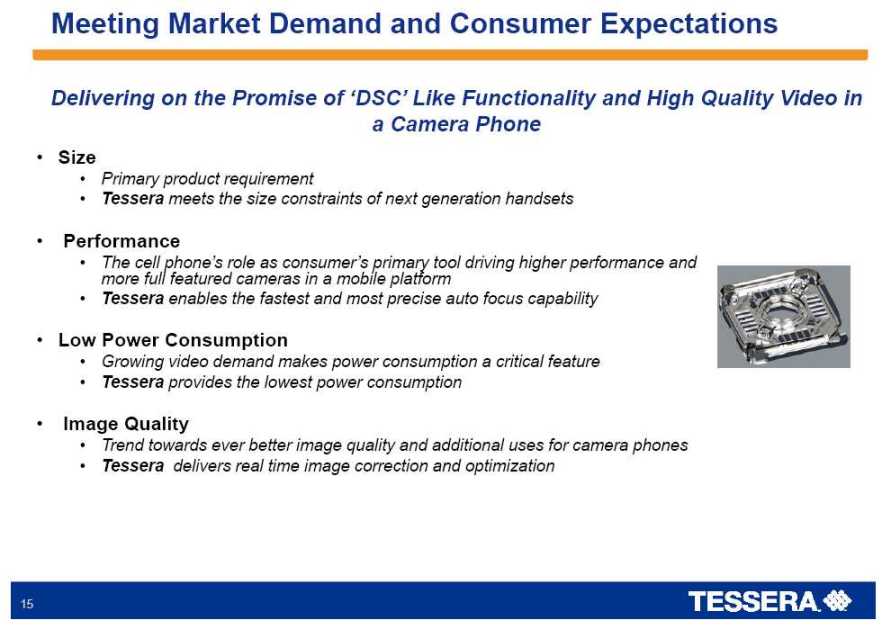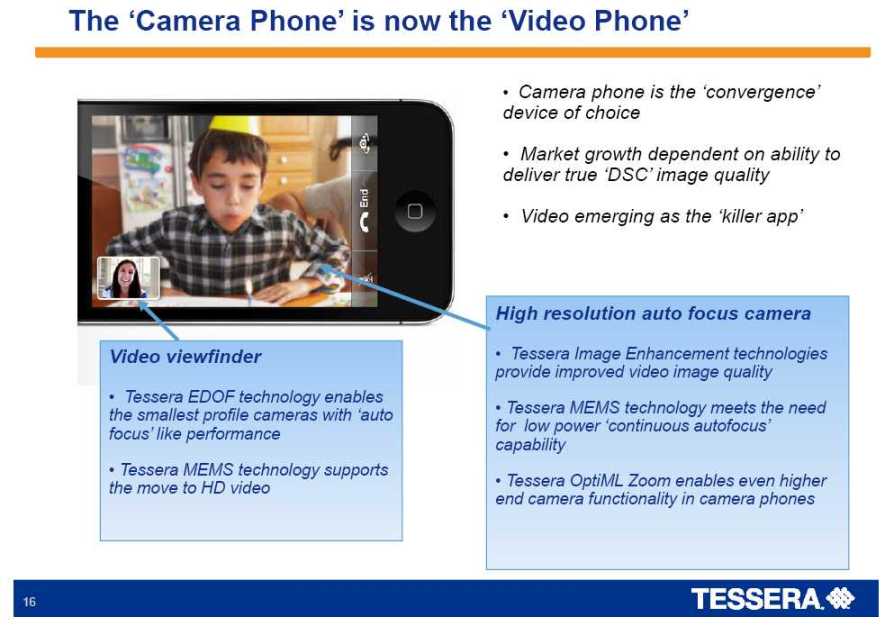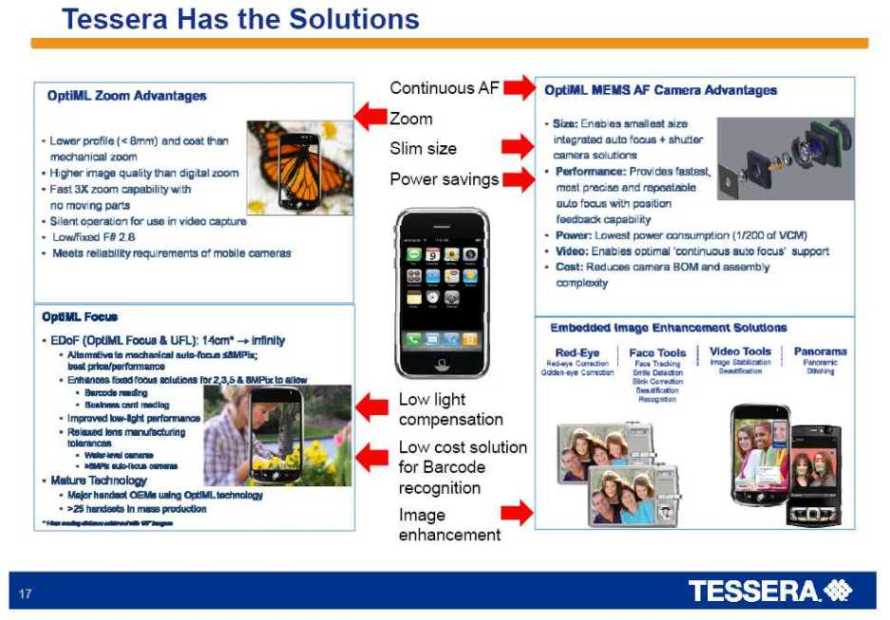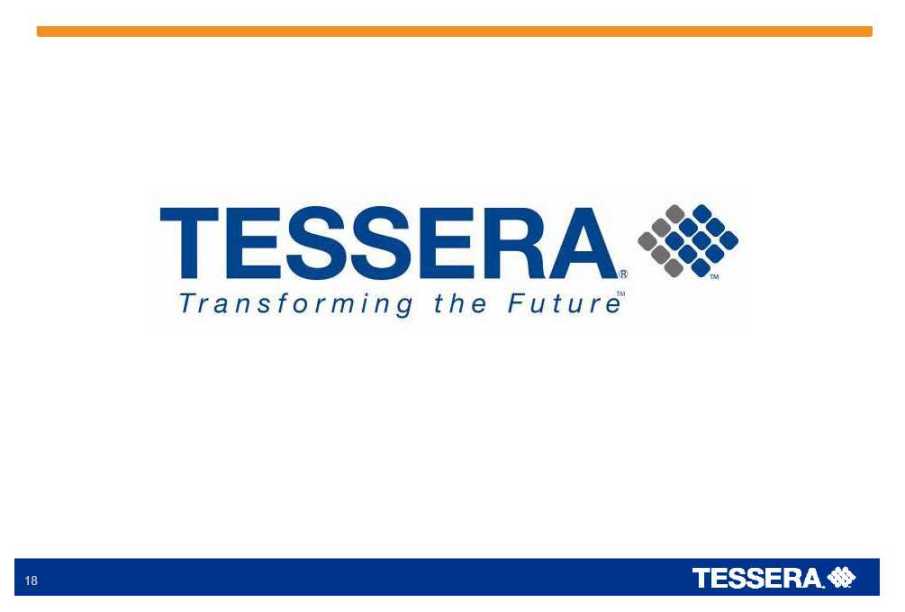Exhibit 99.1
Exhibit 99.1
TESSERA
Corporate Presentation
March 2011
Safe Harbor
This presentation and the accompanying speaker’s remarks may contain forward-looking statements made in reliance on the Safe Harbor provisions of the Private Securities Litigation Reform Act of 1995. Forward-looking statements involve risks and uncertainties that could cause actual results to differ significantly from those projected.
Material factors that may cause results to differ from the statements made include delays, setbacks or losses relating to our intellectual property or intellectual property litigations, or any invalidation or limitation of our key patents; fluctuations in our operating results due to the timing of new license agreements and royalties or due to legal costs; changes in patent laws timing of new license agreements and royalties, or due to legal costs; changes in patent laws, regulation or enforcement, or other factors that might affect our ability to protect our intellectual property; the risk of a decline in demand for semiconductor products; failure by the industry to adopt our technologies; competing technologies; the future expiration of our patents; the future expiration of our license agreements and the cessation of related royalty income; the failure or refusal of licensees to pay royalties; failure to achieve the growth prospects and synergies refusal of licensees to pay royalties; failure to achieve the growth prospects and synergies expected from acquisition transactions; and delays and challenges associated with integrating acquired companies with our existing businesses.
You are cautioned not to place undue reliance on the forward-looking statements, which speak only as off the date off this presentation. Tessera’s filings with the Securities and Exchange Commission, including its Annual Report on Form 10-K for the year ended December 31, 2010, include more information about factors that could affect the company’s financial results.
Tessera assumes no obligation to correct or update information contained in this presentation.
Develops and monetizes innovative miniaturization technologies, which are differentiated by intellectual property content, through licensing or product sales
Tessera At A Glance
• Founded in 1990; IPO in 2003
• Headquartered in San Jose, CA
• 2010 Revenue $301.4M
• 2010 GAAP Net Income $57.3M
• 2010 Non-GAAP Net Income $91.2M
• $475 0M in cash, cash equivalents and investments at Dec. 31st
• $76. 2M in Free Cash Flow in 2010
Free Cash Flow is Operating Cash Flow minus purchase of property, equipment and patents
The Edison Labs of the 21st Century
Ongoing Investment in Innovation
• $74.1 million R&D investment in 2010
• Global organization
Robust patent portfolio – approximately 2,250 worldwide patent and patent applications
2,500 2,000 1,500 1,000 500 0 2005 2006 2007 2008 2009 2010
Imaging & Optics
Micro-electronics
Smartphone Patented Innovation
Over 350 Imaging & Optics Patents and Patents Pending
Over 400 Micro electronics Patents and Patents Pending
For Illustrative Purposes Only
Micro-electronics: Licensing Innovation
• Technology and patent licensing focus: renewals and new
• In-house innovation
• Acquisition of complementary patent portfolios
• Broad use of Tessera patents and technology
Memory
• Double Data Rate Two (DDR2)
• Double Date Rate Three (DDR3)
• Mobile DDR-DRAM
• NOR and NAND Flash Memory
Wireless Application Specific Integrated Circuits
• Baseband Processors
• Radio Frequency (RF) Transceivers
• Audio/Video/Image Processors
• Connectivity: Bluetooth, Wi-Fi, among others
• Microcontrollers
• Applications Central processing Unit (CPUs)
• Power Management
CSP for High-Performance Memory Today & Beyond
Unit Volumes (M)
35000 30000 25000 20000 15000 10000 5000 0 2009 8,152 2,279 2010 5,713 7,887 2011 5,010 11,991 2012 4,922 17,181 2013 4,607 24,343 2014 5,454 27,110
DDR2 DDR3&4
•DDR3 remains mainstream memory solution beyond 2013
• Will be extended to higher frequencies (1600 1866 2133+ MHz) and lower voltages
• DDR4 not defined; being pushed out further possibly 2014
• Tessera CSP technology can meet DDR3+ performance & cost requirements today
Source: Gartner Dataquest, Feb. 2011
Advanced Packaging
MEMORY: CAPACITY + PERFORMANCE
• Next Gen. Server & DDR Module Technologies
• Solid-State Drive & Managed-NAND Solutions
• Scalable Performance with Reduced Power & Cost
Interconnect/Package
IC Circuitry
Board/Interposer
System/Architecture
Enabling Materials
WIRELESS: BANDWIDTH + BATTERY LIFE
• Advanced CSP & Stacked-IC Technologies
• Mobile Solutions for Mobile Memory Integration
• Scalable Performance with Reduced Power & Cost
Interconnect/Package
IC Circuitry
Board/Interposer
System/Architecture
Enabling Materials
2011 Innovation Update: IP Pipeline
300% 250% 200% 150% 100% 50% 0%
2011 2012 2013 2014 2015 2016 2017
Single Die Multi-Die 3D-IC
3D-IC Solutions (TSV etc.)
34% of YTD 2011 IP Pipeline
Multi-Chip CSP Solutions
48% of YTD 2011 IP Pipeline
Single Chip CSP Solutions
18% of 2011 YTD IP Pipeline
Source: New Venture Search, Yole, Prismark, Gartner Averaged (Memory Basis)
Silent Air Cooling
THIN
Enables Dominant Design Trend
SILENT
Reduced Noise Improves User Experience
FLEXIBLE
Form Factor Lowers Cost Enhances Product Design Capability
COMFORT
Skin Temperature Meets OEM Specs
Imaging & Optics: Delivering Products and Technologies
Extended Depth of Field (EDOF)
Zoom
Micro Electro Mechanical Systems (MEMS)
Micro-optics
The Market Opportunity – Smart Phones
Fastest Growing Segment in the Mobile Handset Market
2500 2250 2000 1750 1500 1250 1000 750 500 250 0
2008 2009 2010 2011 2012 2013 2014 2015
>8 MP Market (Munits)
5 MP Market (Munits)
3 MP Market (Munits)
2 MP Market (Munits)
1,3 MP Market (Munits)
VGA Market (Munits)
EDOF – 3Mp+
2011 SAM of ~990 million units growing to ~1.36 billion units in 2013
Zoom – 5Mp+
2012 SAM of ~210 million units growing to ~300 million units in 2013
MEMS – 5Mp+
2012 SAM of ~660 million units growing to ~815 million units in 2013
Source: Yole Development, January 2010
Smart Phone Size Direction
• Tessera’s EDOF and MEMS technology enable smaller profile handsets
• Tessera’s OptiML Zoom brings additional DSC capability to camera phones
Meeting Market Demand and Consumer Expectations
Delivering on the Promise of ‘DSC’ Like Functionality and High Quality Video in a Camera Phone
• Size
• Primary product requirement
• Tessera meets the size constraints of next generation handsets
• Performance
• The cell phone’s role as consumer’s primary tool driving higher performance and more full featured cameras in a mobile platform
• Tessera enables the fastest and most precise auto focus capability
• Low Power Consumption
• Growing video demand makes power consumption a critical feature
• Tessera provides the lowest power consumption
• Image Quality
• Trend towards ever better image quality and additional uses for camera phones
• Tessera delivers real time image correction and optimization
The ‘Camera Phone’ is now the ‘Video Phone
• Camera phone is the ‘convergence’ device of choice
• Market growth dependent on ability to deliver true ‘DSC’ image quality
• Video emerging as the ‘killer app’
Video viewfinder
• Tessera EDOF technology enables the smallest profile cameras with ‘auto focus’ like performance
• Tessera MEMS technology supports the move to HD video
High resolution auto focus camera
• Tessera Image Enhancement technologies provide improved video image quality
• Tessera MEMS technology meets the need for lower power ‘continuous autofocus’ capability
• Tessera OptiML Zoom enables even higher end camera functionality in camera phones
Tessera Has the Solutions
OptiML Zoom Advantages
• Lower profile (<8mm) and cost than mechanical zoom
• Higher image quality than digital zoom
• Fast 3X zoom capability with no moving parts
• Silent operation for use in video capture
• Low/fixed F# 2.8
• Meets reliability requirements of mobile cameras
OptiML Focus
EDoF (OptiML Focus & UFL): 14cm* infinity
• Alternative to mechanical auto-focus <8MPix; best price/performance
• Enhances fixed focus solutions for 2,3,5 & 8MPix to allow
• Barcode reading
• Business card reading
• Improved low-light performance
• Relaxed lens manufacturing tolerances
• Water-level cameras
• 8MPix auto-focus cameras
• Mature Technology
• Major handset OEMs using OptiML technology
• >25 handsets in mass production
Continuous AF
*14cm reading distance achieved with 1/5”
Zoom
Slim size
Power savings
Low light compensation
Low cost solution for Barcode recognition
Image enhancement
OptiML MEMS AF Camera Advantages
• Size: Enables smallest size integrated auto focus + shutter camera solutions
• Performance: Provides fastest, most precise and repeatable auto focus with position feedback capability
• Power: Lowest power consumption (1/200 of VCM)
• Video: Enables optimal ‘continuous auto focus’ support
• Cost: Reduces camera BOM and assembly complexity
Embedded Image Enhancement Solutions
Red-Eye
Red-eye Correction
Golden-eye Correction
Face Tools
Face Tracking
Smile Detection
Blink Correction Beautification
Recognition
Video Tools
Image Stabilization
Beautification
Panorama
Panoramic
Stitching
TESSERA
Transforming the Future
